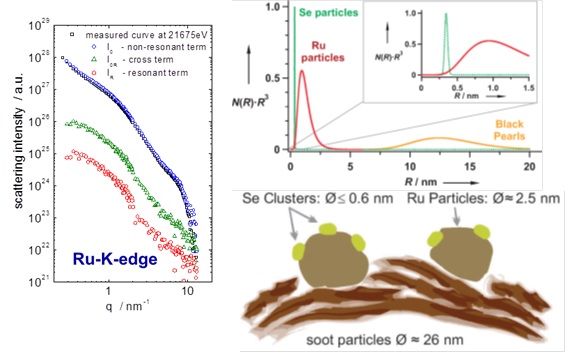Small-angle scattering
Nanostructures and nanostructured materials play an increasingly important role in almost all areas of industry. Along with this, the importance of methods for characterizing such materials continues to increase. Small-angle scattering helps to capture a variety of parameters in the nanometer range. It is able to investigate inhomogeneities in a material in the size range from 0.5 nm to more than 1000 nm.
These can be both nano-particles entrapped in a material and differences in the density, composition or magnetization of the material. So can be z. For example, determine size and distance distributions, morphology and composition as well as the volume fractions of these inhomogeneities.

ASAXS analysis and the derived structural model of a RuSexOy catalyst for fuel cell applications. RuSexOy electrocatalysts with a cluster-like selenium distribution on the surface of carbon black-supported ruthenium nanoparticles are suitable substitutes for platinum on the cathode side of methanol fuel cells.
